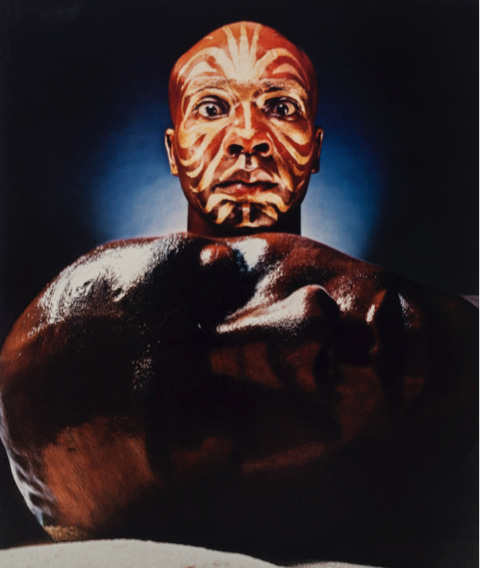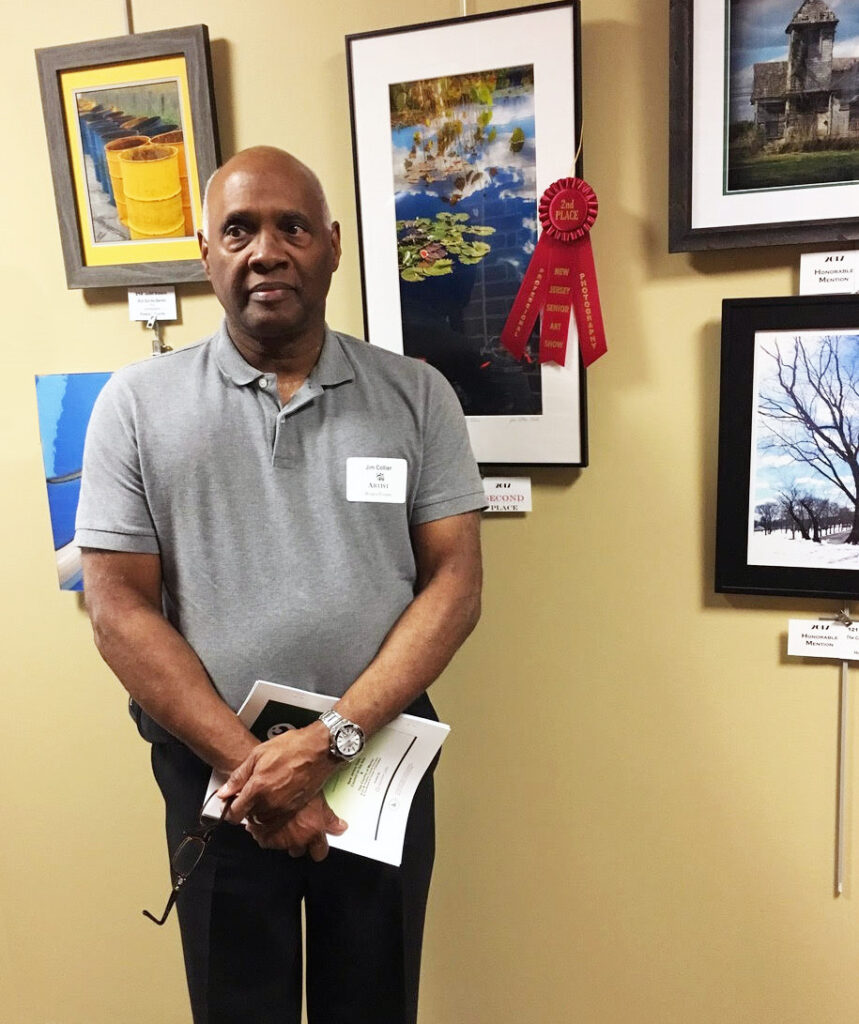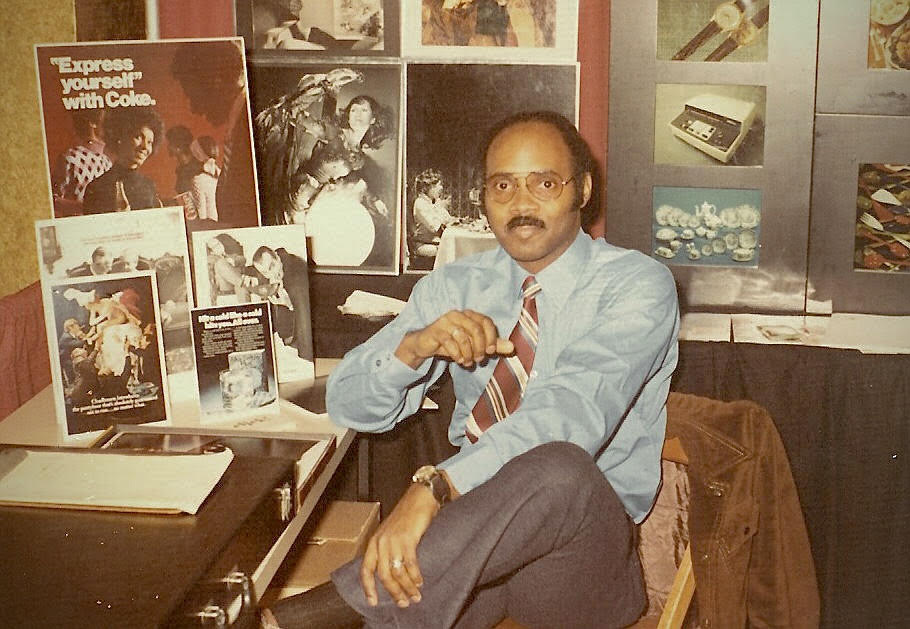
Jim and I grew up in Riverton, a housing development in Harlem. One of its lasting traditions has been the Riverton annual reunions which draw many of the former residents, like Jim and myself. Many years ago, at a reunion, I walked into the Riverton playground which was our “sacred ground” for socialization, basketball and other recreational activities, and where the reunions are held. After greeting longtime friends, I saw a large bulletin board hanging on the playground fence. It was an amazing collection of Jim’s photographs of our peers growing up over the years. It was an emotional visual recall of memories of friends and social events we experienced during the years we lived there. At that moment I realized Jim’s photographic skills had developed far beyond being a hobby. He had become a dedicated artist and archivist. Jim also has extensive experience as an educator and has had his work exhibited at the Brooklyn Museum of Art, the African American Museum and the Schomburg Center for Research in Black Culture among other museums and cultural institutions. These are edited excerpts from our conversation in a Harlem restaurant.
Roger: Recently I was looking at some of your early photographs from the 1950s, 1960s. You were in your teens. Is that when you decided you wanted to be a professional photographer?
Jim: I was 15, 16 then. It was a hobby. It came after that. I began doing layout and design for an advertising firm and I started observing the photographers. Coincidentally, I made the decision to make photography my profession on the day Kennedy was assassinated. I was 20 years old.
Roger: What do you see through the lens that an amateur photographer may not see?
Jim: What I see is the moment. Waiting for the moment, depending on what the subject is doing. To capture one image, I just don’t shoot one image. I shoot many.

Roger: Who initially influenced you?
Jim: Jackie’s father (Jackie is Jim’s wife) and one of his friends. I made a list of 100 photographers that I wanted to work with, and my father told me to pick the first 20 on the list. “Start with the best,” is what he told me. One of the photographers was Bert Stern and I got my first photography job with him. Began working with a Black Lab Technician, Carfield Lillard. He told me I wasn’t selected because I was Black, but I made a good presentation. Had to wait 3 months before I started. I used that time to improve my skills. My technical skills were good, but stiff. I wanted to learn the creative side.
Roger: As clients, you’ve had AT&T, Polaroid, Coca Cola, and Sony to name a few and you also worked for the NAACP. What was the NAACP project?
Jim: It was 1971 and it was down South. Mississippi and Alabama. It was four days to document that poor Black people were eligible to receive food stamps they hadn’t been getting. My father said I was going to learn a lot. A Black minister met me at the airport and when he opened his jacket, he had a pistol on his hip. A Black truck driver had a shotgun on a rack in the truck and I asked him what it was for, and he said, “wild dogs.” I was taking photographs and had a motor drive on my camera and folks started running thinking it was gunshots. I felt safe because I didn’t interact with any white people. When I was leaving a woman gave me a burlap bag with nuts in it as a gift. That’s all she could afford.
Roger: You’ve taught privately and were on the faculty at Fashion Institute of Technology. What made you decide to pursue teaching?
Jim: I had taken a photograph of a Black male model titled Sunrise and when one of my white clients saw it, he thought I was making a statement about Black militancy. I wasn’t, but as a result I stopped getting work from him and other white clients. At the same time my studio rent doubled. FIT offered me a full-time position and I accepted.
Roger: How were you able to balance teaching and exhibiting your work?
Jim: It was a conflict during school time, but I would work on my own projects during July and August and do location work when I could.
Roger: What have you learned from your students?
Jim: Patience. I would always get nervous on the first day of class, not wanting to prejudge students. One time a student came dressed in all black. Gothic. He turned out to be one of the best students.
Roger: What was the most dangerous shoot as a photographer?
Jim: A parade on Broadway. I wasn’t working. I was with my daughter and son, shooting for pleasure. We were standing under a construction barrier, and it collapsed. We weren’t injured but other folks were. Some had nails in them.

Roger: What project are you most proud of?
Jim: The NAACP project and being Chairman of the Photography Department at FIT.
Roger: What’s your “Dream Project” you haven’t shot yet?
Jim: Don’t think of it that way. I want to help young photographers to be better and help hobby photographers decide they can make a living from it.
Roger: What comes to mind when you hear the names of the renowned photographers, James Van Der Zee, Roy DeCarava, Diane Arbus, and Anthony Barbosa?
Jim: Van Der Zee: Pioneer. Shot Black intellectuals and the community. Culturally relevant photography…. DeCarava: Brave. Shot tough people in tough situations…. Arbus: Related to her subjects as people, as real human beings……. Barbosa: Very adventurous. I know him very well.
Roger: And Jim Collier?
Jim: Doesn’t work in one genre with the goal to feed my family. G&S





Leave a Comment